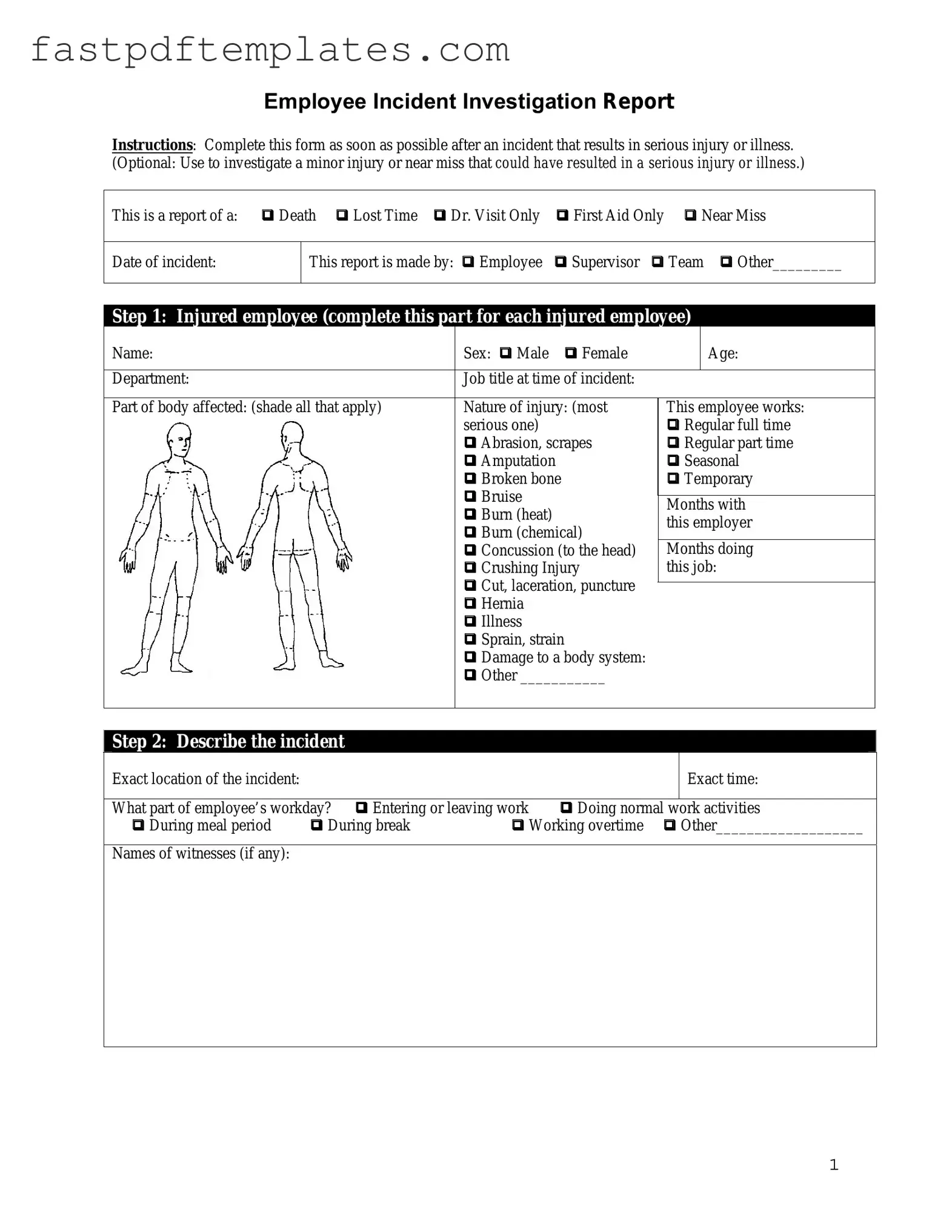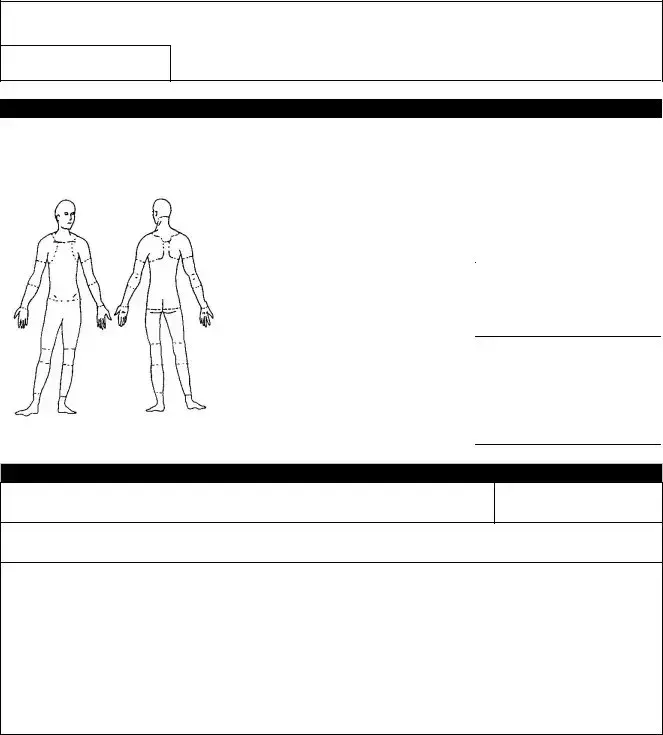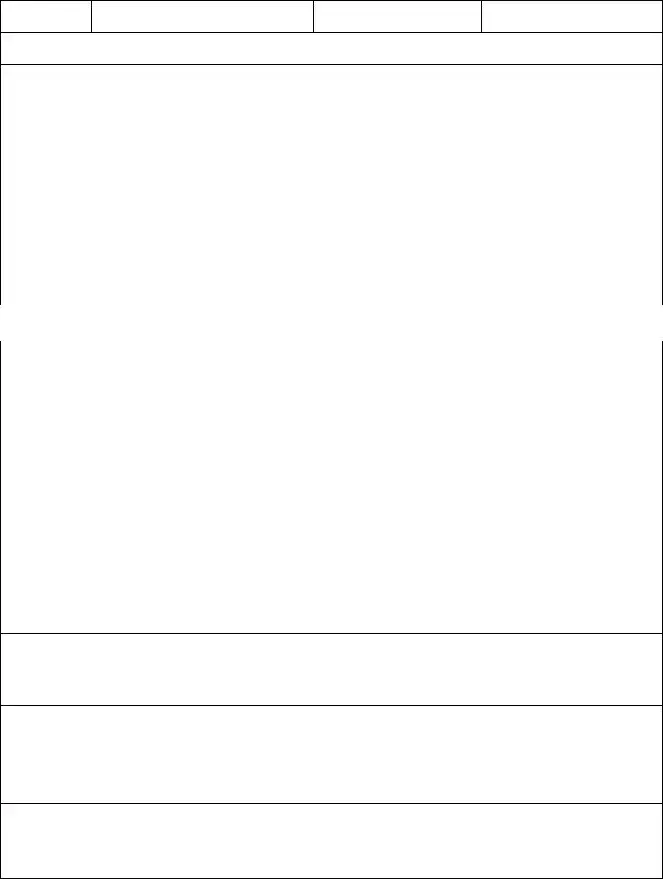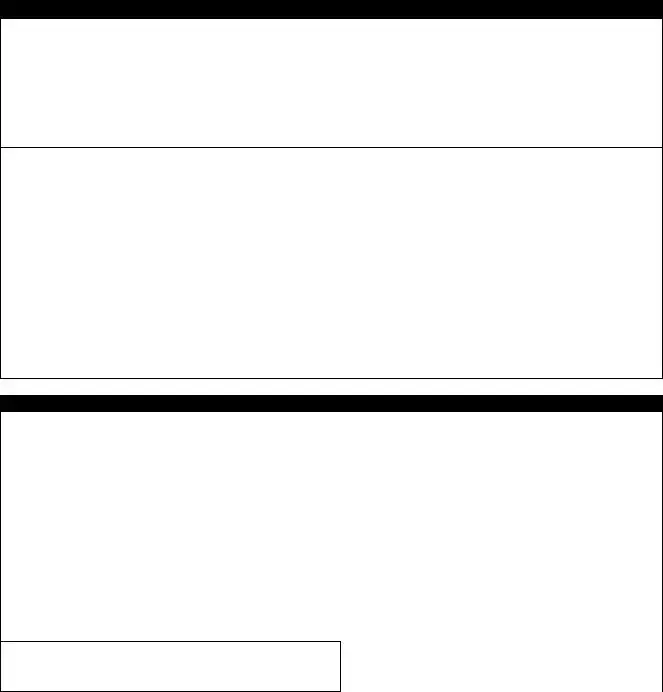The Incident Report form serves a similar purpose to the Employee Accident Report form by documenting any workplace incidents, regardless of whether they resulted in injury. This form captures details such as the date, time, and location of the incident, along with a description of what happened. Both forms aim to provide a clear account of events, which can be crucial for understanding the circumstances surrounding the incident and preventing future occurrences.
The Workers’ Compensation Claim form is closely related to the Employee Accident Report form as it is often initiated following an accident that results in an employee's injury. This form is used to claim benefits for medical expenses and lost wages due to the injury. While the Employee Accident Report focuses on the details of the incident, the Workers’ Compensation Claim form emphasizes the financial and medical ramifications, ensuring that employees receive the support they need after an accident.
The Safety Incident Log is another document that shares similarities with the Employee Accident Report form. This log records all safety-related incidents within a workplace, not just those involving injuries. It helps organizations track patterns over time, identify potential hazards, and implement safety measures. Both documents serve as tools for improving workplace safety by providing insights into incidents and fostering a culture of accountability.
The Near Miss Report form is akin to the Employee Accident Report form but focuses on incidents that could have resulted in injury but did not. This form allows employees to report situations that pose a risk, helping organizations to address potential hazards proactively. By documenting near misses, companies can enhance their safety protocols and reduce the likelihood of actual accidents occurring in the future.
The First Aid Report form is also similar, as it documents instances where first aid was administered to an employee following an accident or injury. While the Employee Accident Report details the circumstances surrounding the incident, the First Aid Report focuses on the immediate response and care provided. This documentation is essential for understanding the severity of the incident and ensuring that appropriate follow-up care is arranged.
Finally, the Health and Safety Audit Report shares a connection with the Employee Accident Report form by assessing the overall safety practices within a workplace. This report reviews compliance with safety regulations and identifies areas for improvement. While the Employee Accident Report focuses on specific incidents, the Health and Safety Audit Report takes a broader approach, examining policies and practices that contribute to a safer work environment.



